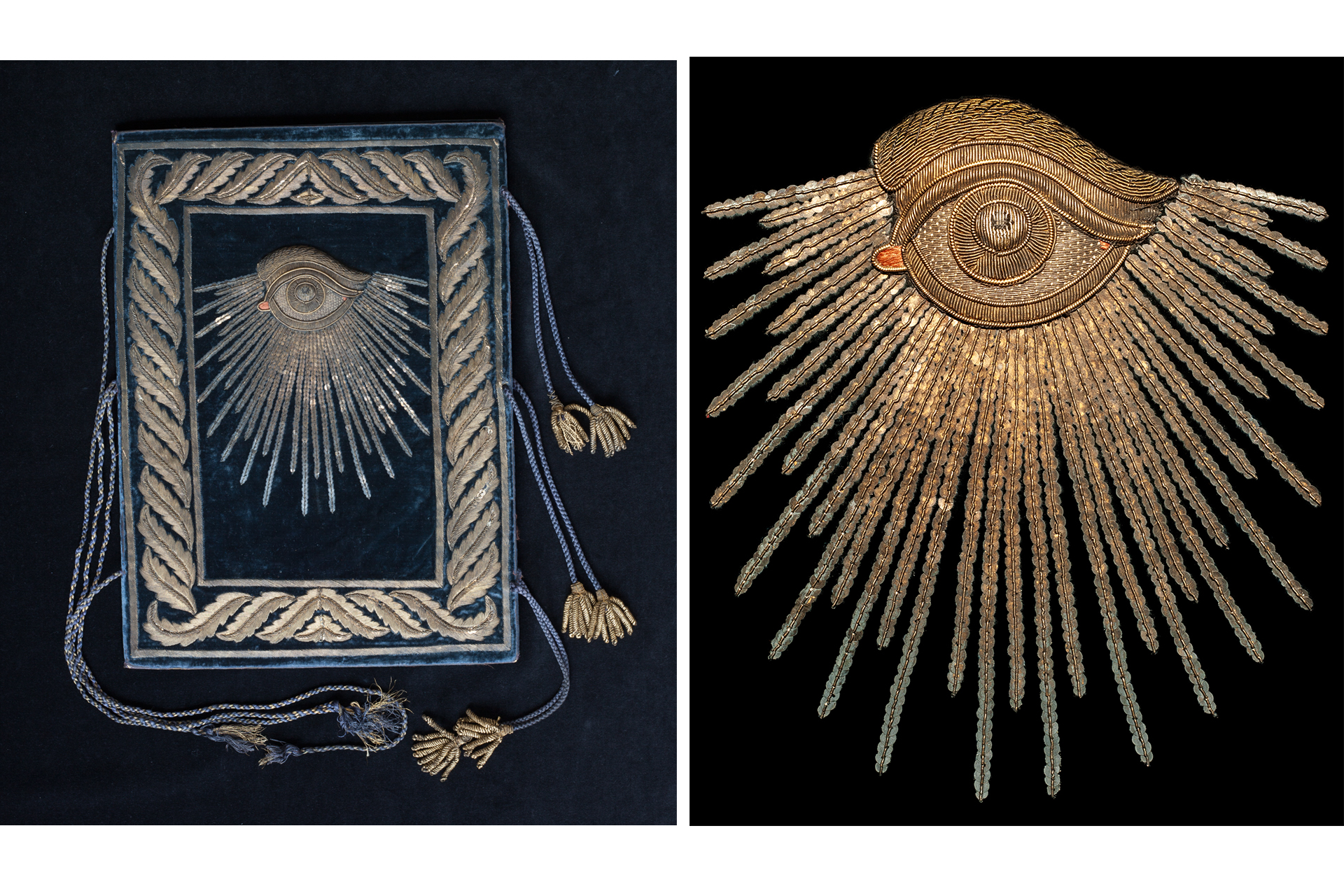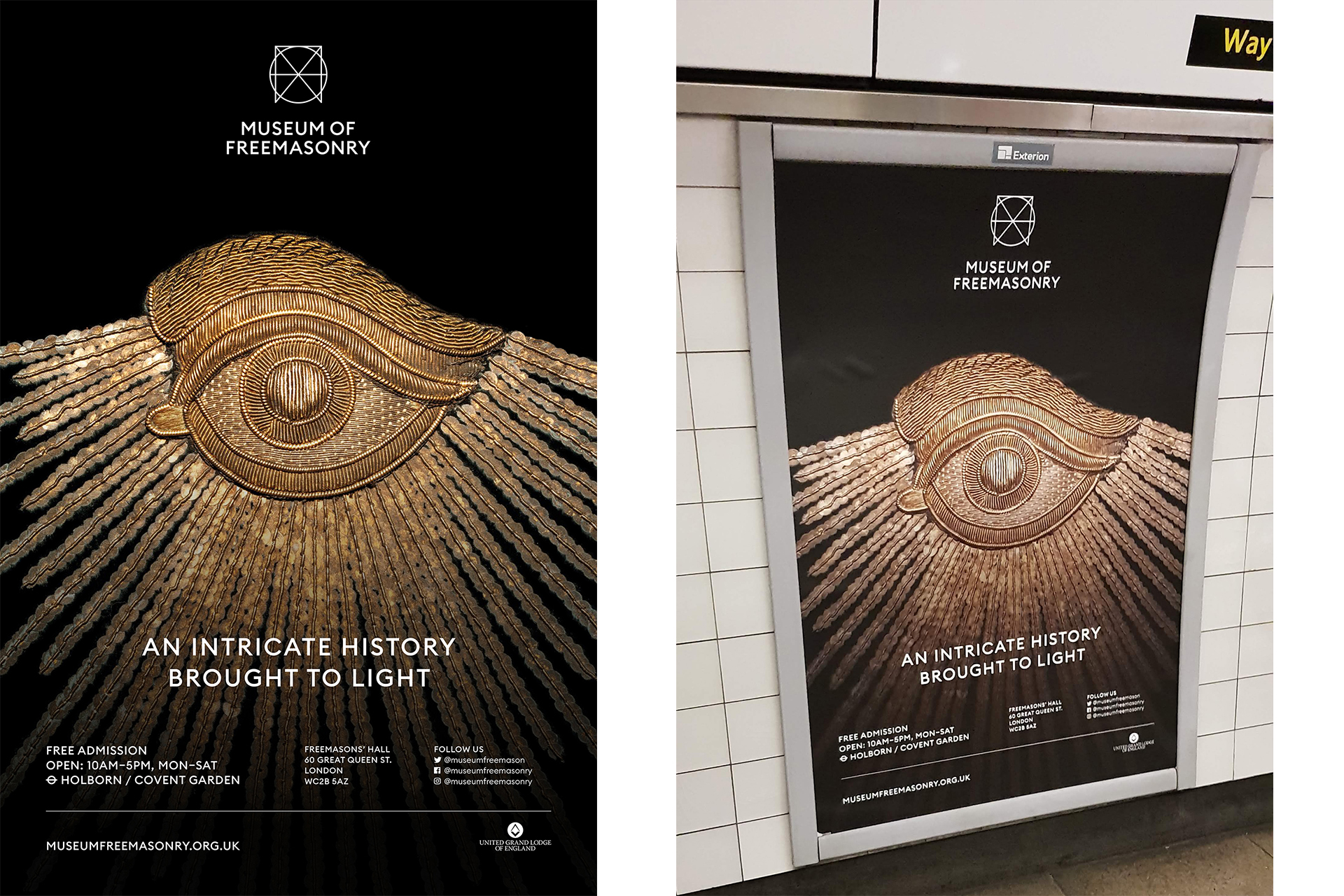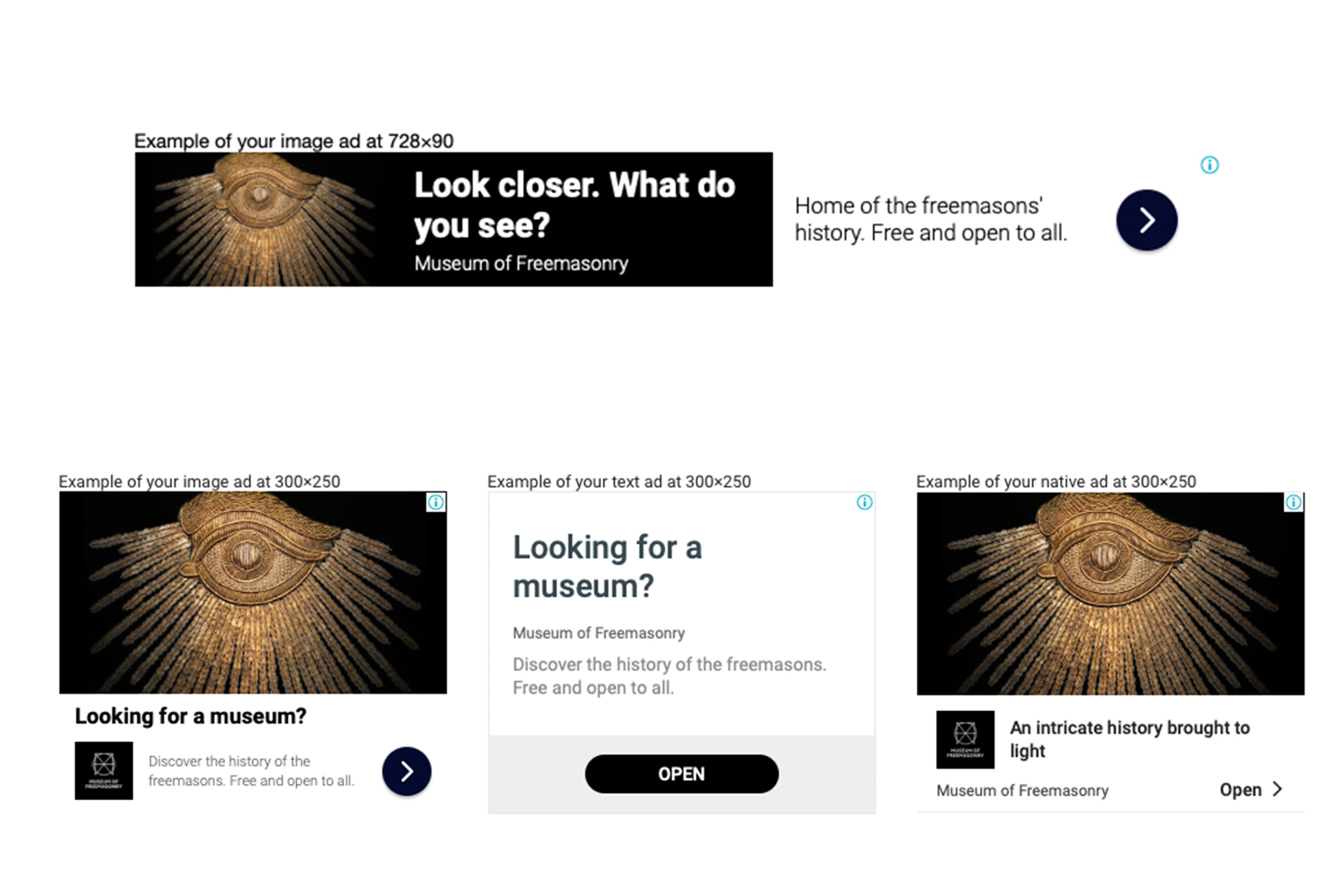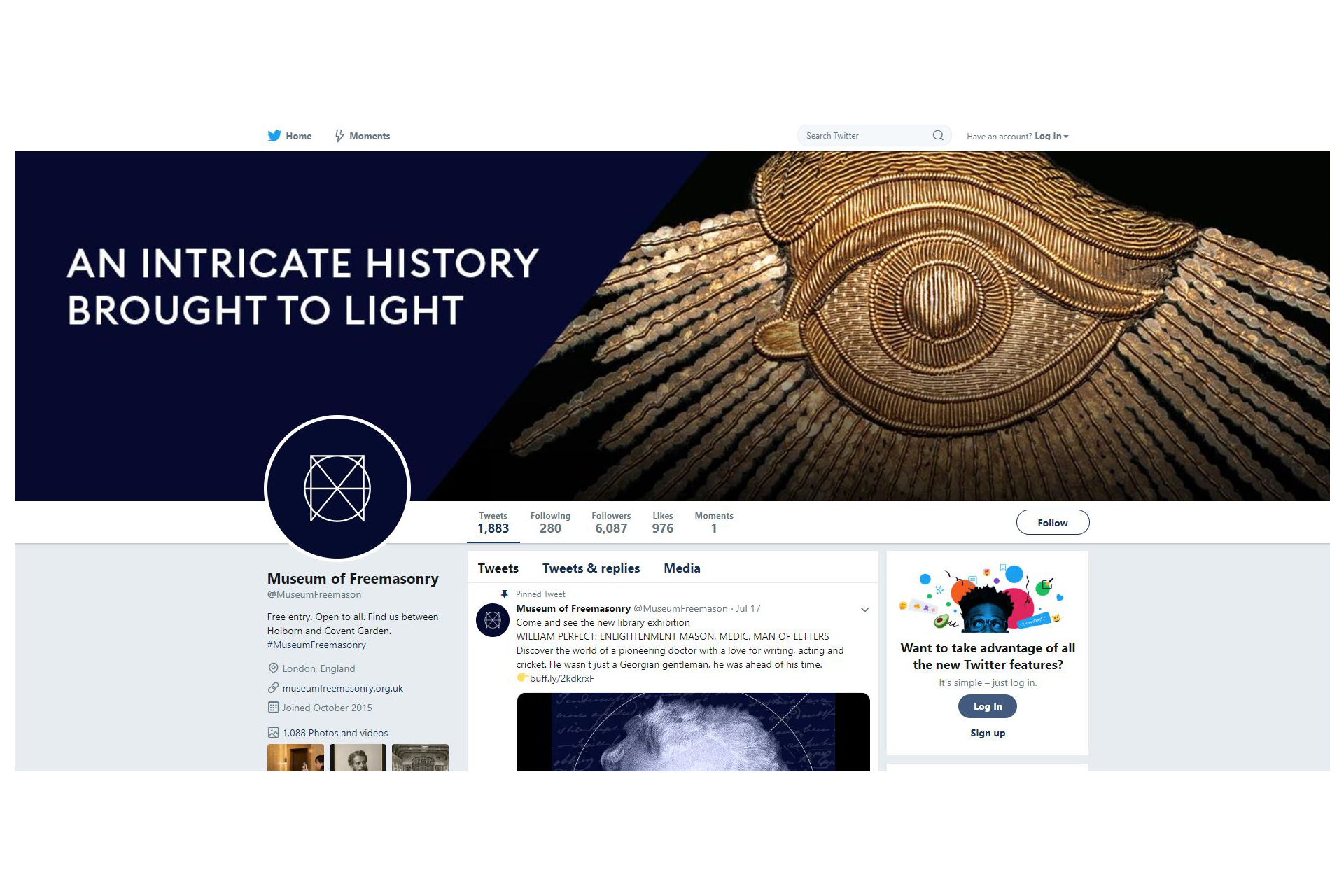CASE STUDY: MUSEUM OF FREEMASONRY AWARENESS CAMPAIGN 2019
BRIEF
When I joined Museum of Freemasonry in 2018 it was languishing with no clear identity, no audience data or insights, one social media channel and an outdated website. We trailed our competitors. Our goal to double visitors by 2021 to grow audience share. After a months-long stage of diagnosis, including audience-testing and data collecting, we identified our target cultural segments and developed a new brand identity that would help attract those segments.
Along with a new brand identity (name change, distinctive assets, tone of voice), we built a new website based on user personas, and introduced a suite of new social media channels, as well as a CRM to communicate directly with our visitors. A content plan using these channels was devised to meet the need of the growth strategy - get museum goers who are free-thinking and curious to visit us by representing the diverse and unexpected history of the freemasons.
A recurring line throughout the audience testing was ‘we never knew this was here’. So the advertising campaign platform would be simple: be seen.
CAMPAIGN

For the campaign creative we chose the most recognisable masonic symbol: the All-Seeing Eye. Despite it being seen in conspiratorial circles for many years, it’s distinctiveness outweighed any potential negative association. It would have to be approved by the Museum’s trustees and stakeholders. A 19th-century gold thread and sequin book cover was photographed for Ascend Studio to work from.


Once we finalised the creative, I planed a double-burst city-wide London Underground and London Bus campaign with Global. Being based in Covent Garden we targeted that station and Holborn in particular, as well as along the connecting Tube lines (Piccadilly and Central). We also targeted key sites on London’s museum trail near the V&A, British Museum, Imperial War Museum, etc. We had 4-sheet, 6-sheet and 12-sheet, as well as illuminated and escalator panels. This OOH reached the 25-55 culturally aware and curious segments we wanted to attract.

ATL activity included articles for freemason publications such as FMT, the official magazine for United Grand Lodge of England. With the long-standing stigma of being ‘secretive’ there was a lot of positive audience and stakeholder engagement following the roll-out of the campaign. The 200,000 members in England ands Wales felt a renewed pride in seeing their history being so publicly prominent.

The London Bus mega rear adverts were a novel idea to take our brand personality into the real world. ‘Unexpected’ was a key concept in our diagnosis stage and nothing would be more unexpected than this.

In addition to the OOH advertising we produced a sophisticated pamphlet. A smart folded concept played on the idea of revealing, again something hardwired into the overall brand creative. We dropped 20,000 of these all around London’s cultural hubs aligning with the first burst of the OOH.

The local tourism market is vital for visitor attractions. I worked with London Planner to maintain a solid placement in their magazines and on their website while also taking a square on their city map. This map was placed in all Visit London sites and local hotels. Along with an issue of the magazine, the map was handed out in Covent Garden during high season. It had an estimated reach of over 1.5 million.


BTL activity to support the OOH and print included Google Search and Display ads as well as Facebook and Instagram ads. These were geo-targeted to London/South East, 25-55 male and female users. Engagement was high with Facebook showing a 36% increase alone.

Branding was consistent across all channels, so from all social to the website the same creative was employed for profile headers and backgrounds everywhere.


When a potential visitor was checking their phone while on a train in London, they’d see an ad in their live feed, then on the Tube platform, and when they left the station on a bus driving past before finally seeing the same message outside the building itself.
RESULT
Visitors who walked through the doors: Up 30%
Unique visitors to the website: Up 51%
Newsletter subscribers: Up 194%
Facebook, Instagram and Twitter combined followers: Up 62%
Within the first year, the strategic integrated campaign had helped drive visitor growth delivering the largest ever result and moving the museum past our target competitor gaining in audience share.
BACK